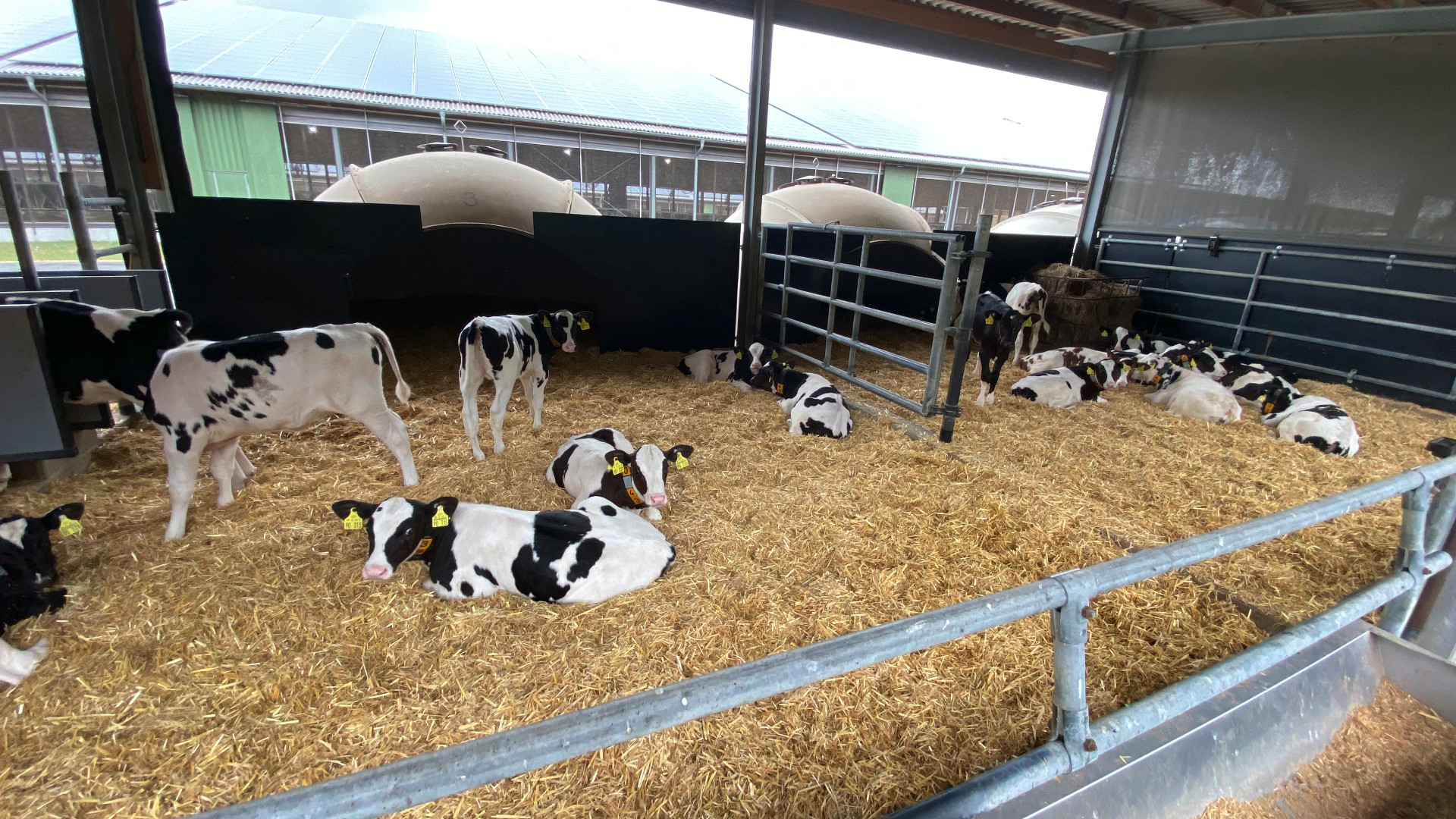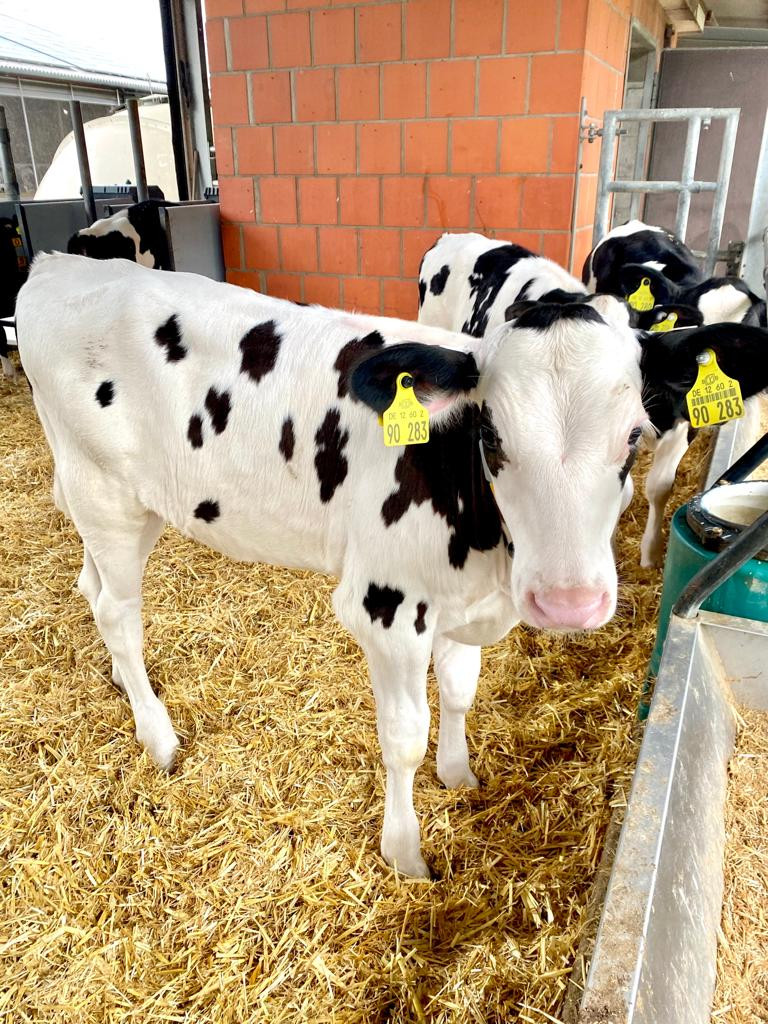Financial considerations also play a role in the calf barn.
16. Februar 2024 — General Information, Calf feeders — #IglooSystem #Practice report #Calf feeder #Gains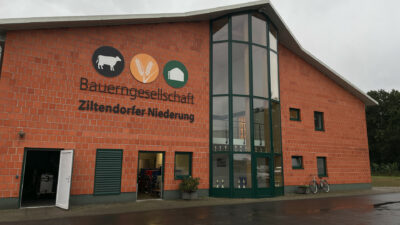
The dairy farm of the Ziltendorfer Niederung farming company is located in the east of the state of Brandenburg. In an interview with Holm & Laue, farm manager Roman Reincke and livestock rearing manager Christopher Braatz describe their experience with rearing calves after moving to a new location in 2015 and expanding the farm from 1250 to 2800 cows.
This article is about
-
Initial difficulties in the old calf barn
-
The new igloo barn
-
The rearing programme
-
Giving calves a good start in life
-
Preparation for high milk quantities in the K0 area
-
Automated feeding in the igloo system barn
-
Feeding and dry food intake
-
Monitoring success based on animal weight
-
The challenge of 28-day transport regulations
-
Effect on the result of the overall herd
Initial difficulties in the old calf barn
Calves at the farm's old location were housed in individual igloos in the K0 area (K0 = directly after birth up to approx. 2 weeks). Calves were kept in small groups in the barn in the K1 area (following K0 until being weaned off milk). There were always climate-related problems due to changing weather conditions. It was impossible to create a microclimate, and the high ammonia concentration repeatedly led to respiratory diseases in the calves.
There were not only respiratory diseases, but also problems with cryptosporidia in the K0 area at the old location. It was therefore clear that individual hutches should not be used at the new location. Instead, higher calf pens were installed, making it easy to clean and disinfect the boxes.
The new igloo barn
The first igloo verandas were used at the old site because the barn capacity became too limited when expansion began. They worked very well. When it came to planning a calf barn for the new site, farm manager Reincke and his team set out to find the "perfect" calf barn with a calf feeder. However, they were not successful in their search, and so the decision was made to try tried-and-tested large-capacity igloos. They were initially a little sceptical as to whether a large-capacity igloo solution could be implemented on such an extensive scale, so a canopy was built and 16 large-capacity igloos with 4 H&L 100 calf feeders were installed. "The igloo barn was not very expensive. We could have reconsidered at any time in order to find a different solution," says Roman Reincke in retrospect.
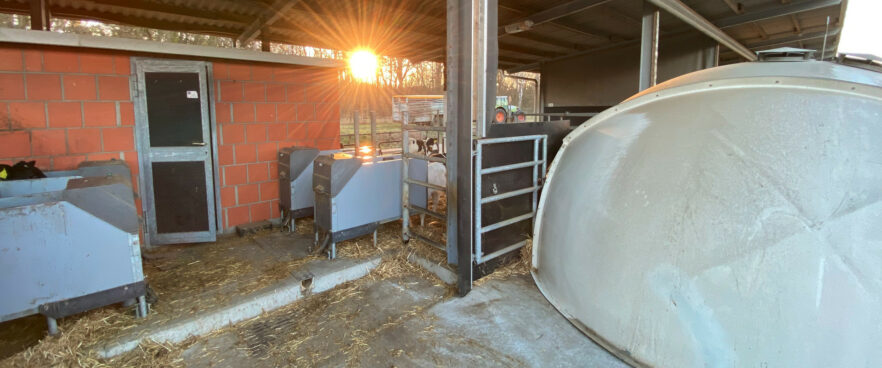
The calves were now reared in the new igloo barn with plenty of fresh air. However, the size of the facility has also had a negative impact. The calves did not have enough protection, especially in bad, windy weather. The farming company's team has continuously improved the barn. For example, the mesh partitions were fitted with plastic panels right up to the opening of the igloo, affording the calves protection in the resting area in front of the igloo. Wind protection blinds were also installed to provide additional protection in poor weather. The plastic panels also prevent spray mist from entering the other occupied boxes when the pens are cleaned with a pressure washer.
"I can't say that we no longer have any lung problems, but it's easier for us to manage," says a very satisfied Mr Reincke.
The central location of the K0 and K1 calf rearing areas on the farm has the major advantage that people are constantly passing by the calves and can observe the animals as they "stroll past".
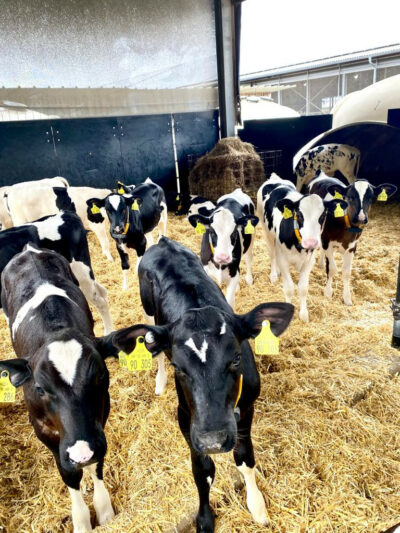
The rearing programme
In the old system, the calves were still weaned at 8 weeks of age. "Back then, it was a hype originating in the USA to provide calves with concentrated feed from an early age. But now we are aiming for daily weight gains of well over 1000 grams. That wasn't possible with just 8 weeks," said Reincke.
In addition, the freshly weaned calves were transferred immediately to the former young cattle shed in order to save space. The conditions there are not good and the 8-week-old calves are often affected in terms of their development.
" We therefore decided to only rear the calves that we need for breeding. This gives us more space to house the calves in the K1 area for longer. Over the last three years, we have had an average reproduction rate of around 25%. The calves can now be kept and fed in the igloo barn for up to 12 weeks."
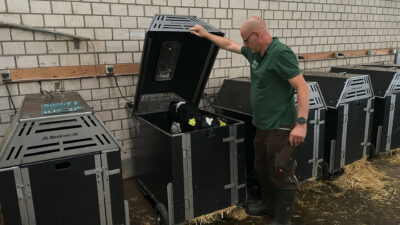
Giving calves a good start in life
The calves are given 4 litres of colostrum at birth. The colostrum is tested and only used if it is of good quality. The average Brix values on the farm are 25-27%.
After being given colostrum, the calves are dried in heated boxes. They remain in these boxes until they are really dry. The female calves are given blankets depending on the temperature (from autumn onwards).
The repro team in the reproduction area is responsible for monitoring calvings, but also for administering colostrum, weighing the calves and supervising them in the heated boxes. After about 12 hours, the calves then join the female calves in the K0 area.
Preparation for high milk quantities in the K0 area
The calves are given 3 litres of transitional milk at their second feed on the first day. This makes 7 litres on day one. And then 3 times 4 litres starting from the second day.
During the K0 stage, the calves continue to receive transitional milk from one of the three MilkTaxis on the farm. Here too, the calves receive 3 times 4 litres of transitional milk or CMR feed per day. The third feed is particularly beneficial in winter. This is also easy to realise with the current staffing level.
In the last few days before they are moved to K1, they are familiarised with milk replacer in their individual pens in order to ease the stress of the move.
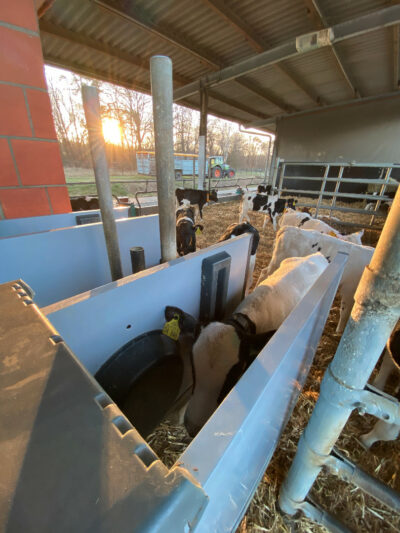
Automated feeding in the igloo system barn
After 14 days, they are introduced to one of the four H&L 100 feeders in the K1 area and from then on also receive 12 litres of CMR feed. At the beginning, the calves are fed a CMR containing 60 % skimmed milk, which they are already familiar with from the K0 area.
Each feeder serves 56 calves in 2 groups at 4 stations (14 calves per HygieneStation, 2 stations per group). The calves are switched gradually. And the 60% CMR is fed for a further 2 weeks after the last calf has been transferred to the barn. This is followed by a switch to a more economical CMR containing 40 % skimmed milk.
A major advantage of the H&L 100 is the excellent level of animal control. Unlike the milk bars in the K0 area, where it is impossible to see how much each calf has consumed, it is possible to document how much each calf has consumed.
Feeding and dry food intake
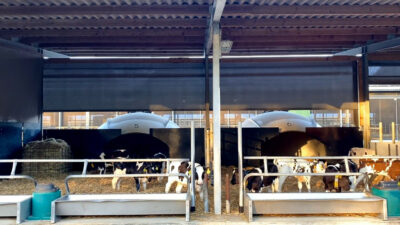
The calves are given dry TMR while still in their individual pens. This is of course continued when they are in the group.
The feeding curve is then slowly reduced at 6 weeks in order to gradually wean them over a further 6 weeks. However, the team is currently considering feeding the 12 litres for up to 8 weeks and then weaning them more quickly.
Solid feeding begins at 8 weeks, when the calves also get the silage ration of newly milking cows. Milk feeding ends after 12 weeks. "Slow weaning means that this is only a small step towards the end and the calves grow almost exclusively on roughage," says rearing manager Christopher Braatz.
The calves sometimes stay in their igloos for 1-2 weeks longer when there are only a few calves in the barn. They are then also much more robust in the young cattle shed, as they can still familiarise themselves with a diet consisting exclusively of roughage and concentrated feed. Unfortunately, this is not always possible, and the double strain of weaning and rehousing is also noticeable in the calves.
Monitoring success based on animal weight
Birth weight is determined immediately after birth. The calves are weighed a second time when they are transferred from the K0 to the K1 area. They are then weighed a third time when they leave the K1 area.
Weights are impressive. Body weight gain in the K0 area is over 1,100 g per day! The average weight gain later in the K1 area is currently 1,050 g. In winter, body weight gain is around 100 g lower, but this is a very satisfactory level.
Mr Braatz attributes these high weight gains to, among other things, the good supply of colostrum and high-quality 60% skimmed milk CMR. Later, in the young cattle area, the animals are also weighed every 2 months until they are inseminated.
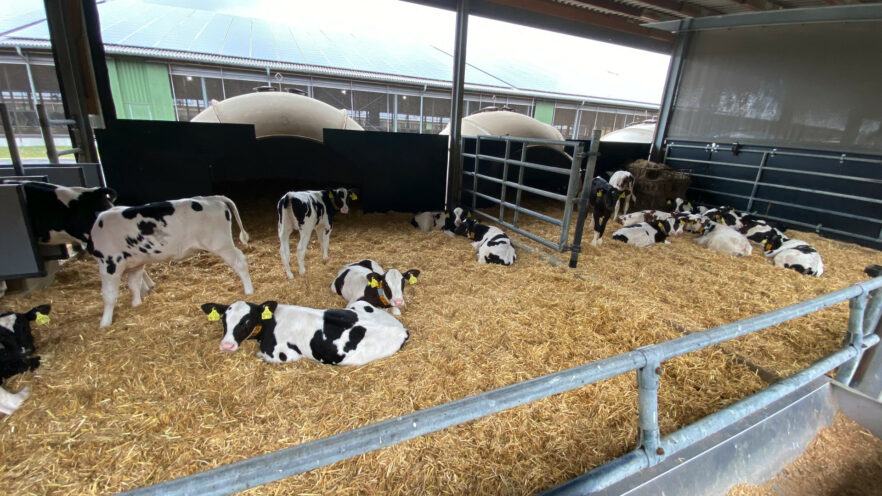
The challenge of 28-day transport regulations
The requirement for all animals leaving the farm to be kept for 28 days means that the K0 area must generally be given consideration. As an interim solution, the farming company has purchased another 4 igloo verandas, which also work well for bull calves.
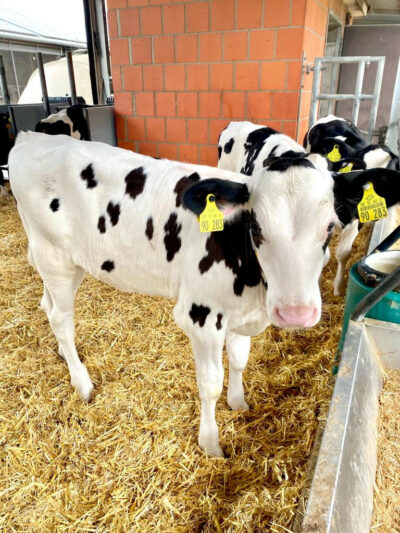
Effect on the result of the overall herd
Milk yield and first calving age were already very good on the Ziltendorfer Niederung farm. "I can't say whether this is due to our calf rearing methods. It would be a good gut feeling to confirm this. But in our case, for example, we have been able to greatly reduce the number of milk cows having to be sold during their first lactation. This surely has something to do with better calf rearing methods. And a long-term, productive herd with low replacement rates saves rearing costs and increases lifetime performance. We currently have a reproduction rate of 18.1% (Jan.-Oct. 2023) and a lifetime output of over 44,000 litres. The financial aspects of this play a major role, and many farms are failing to capitalise on this," says farm manager Roman Reincke, concluding with great satisfaction!

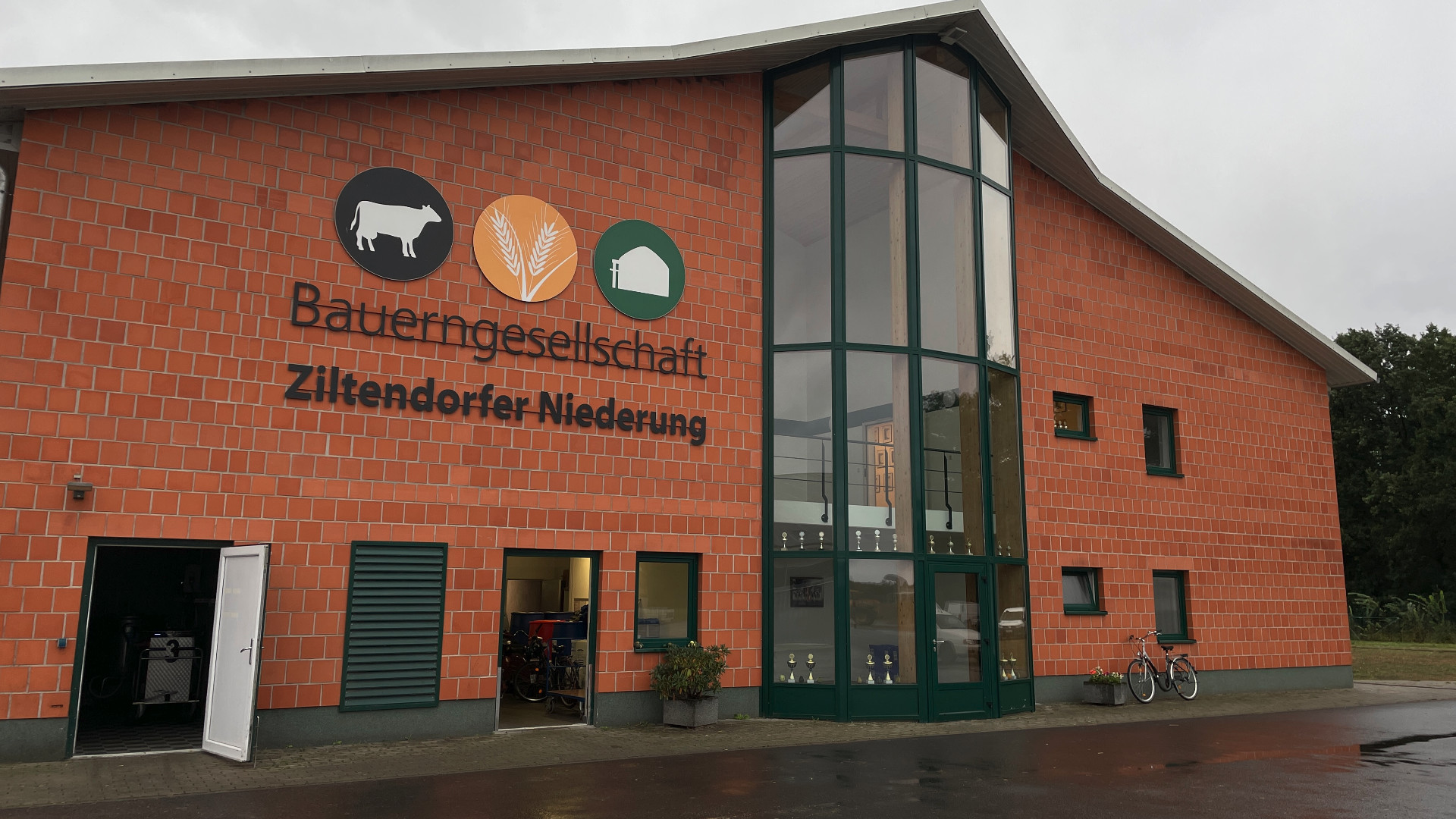
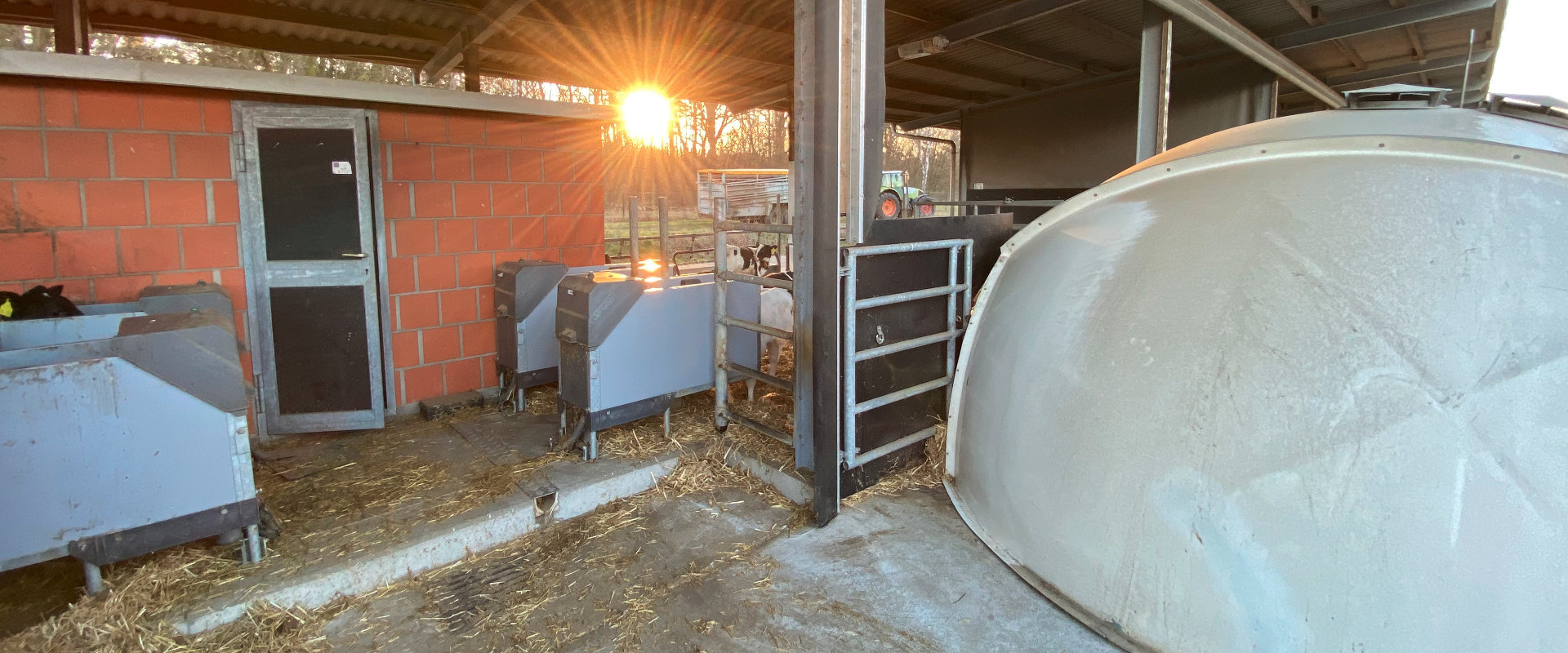
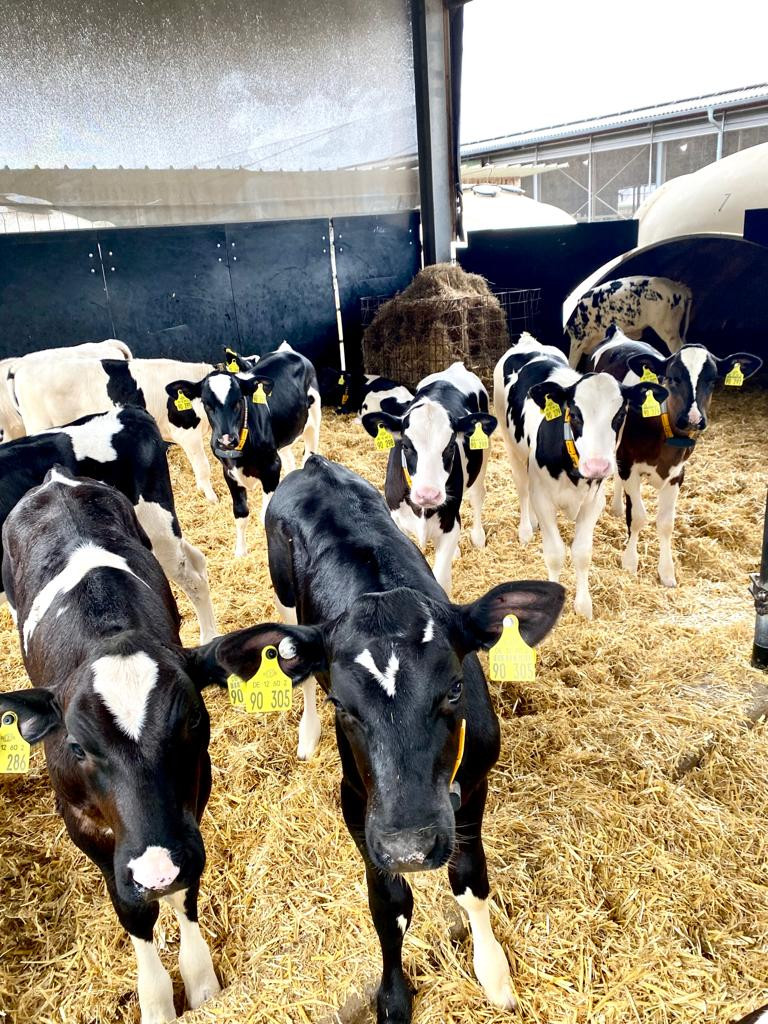
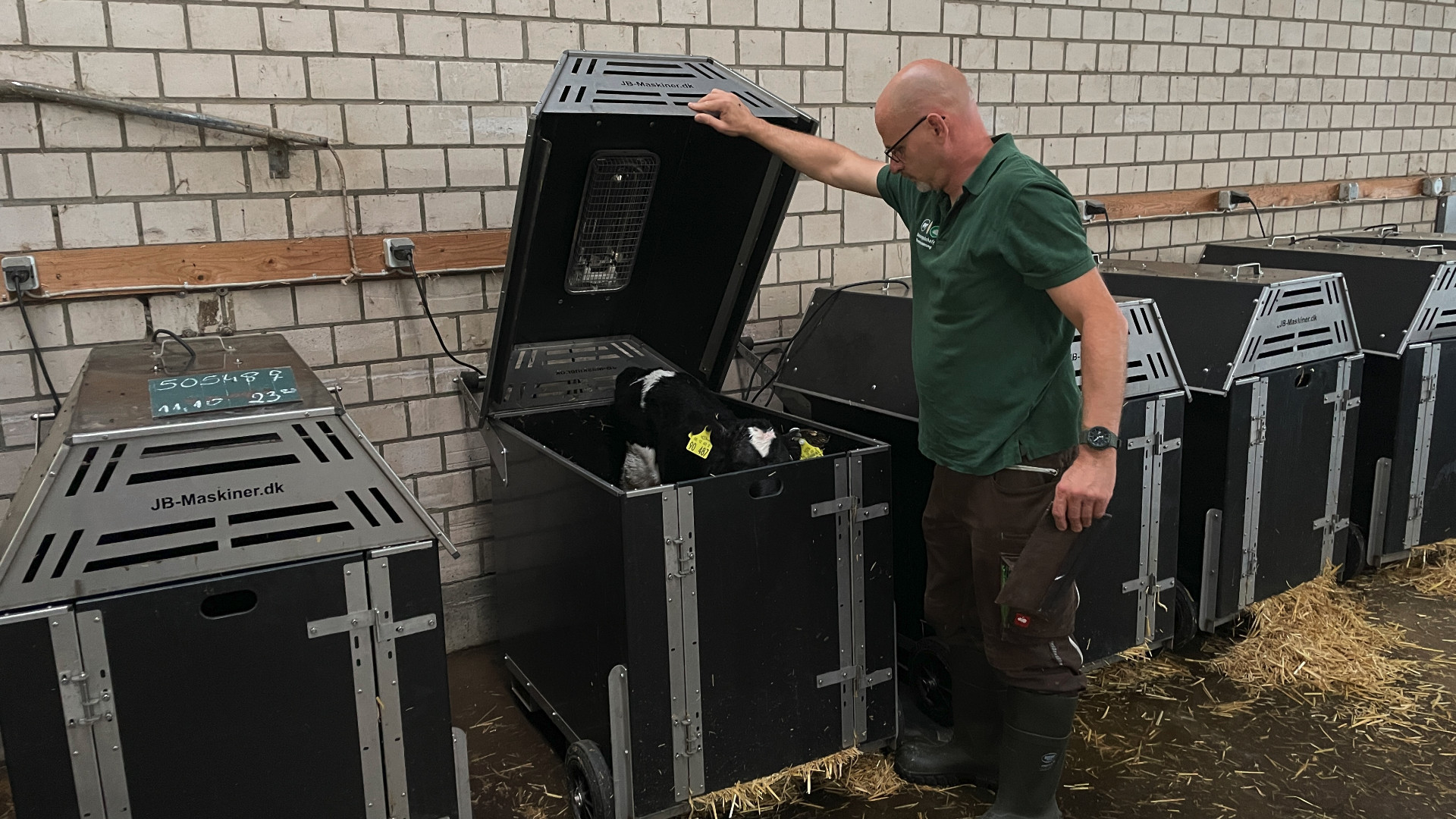 Rearing manager Christopher Braatz monitors newborn calves in a heated box
Rearing manager Christopher Braatz monitors newborn calves in a heated box
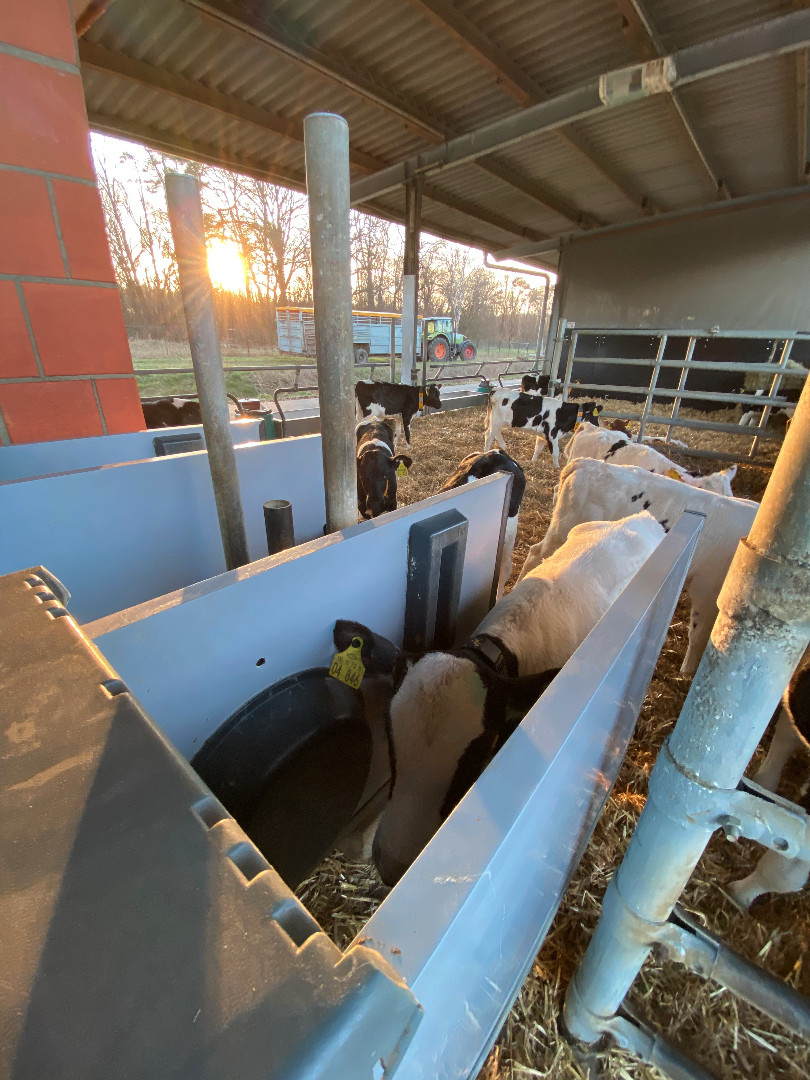
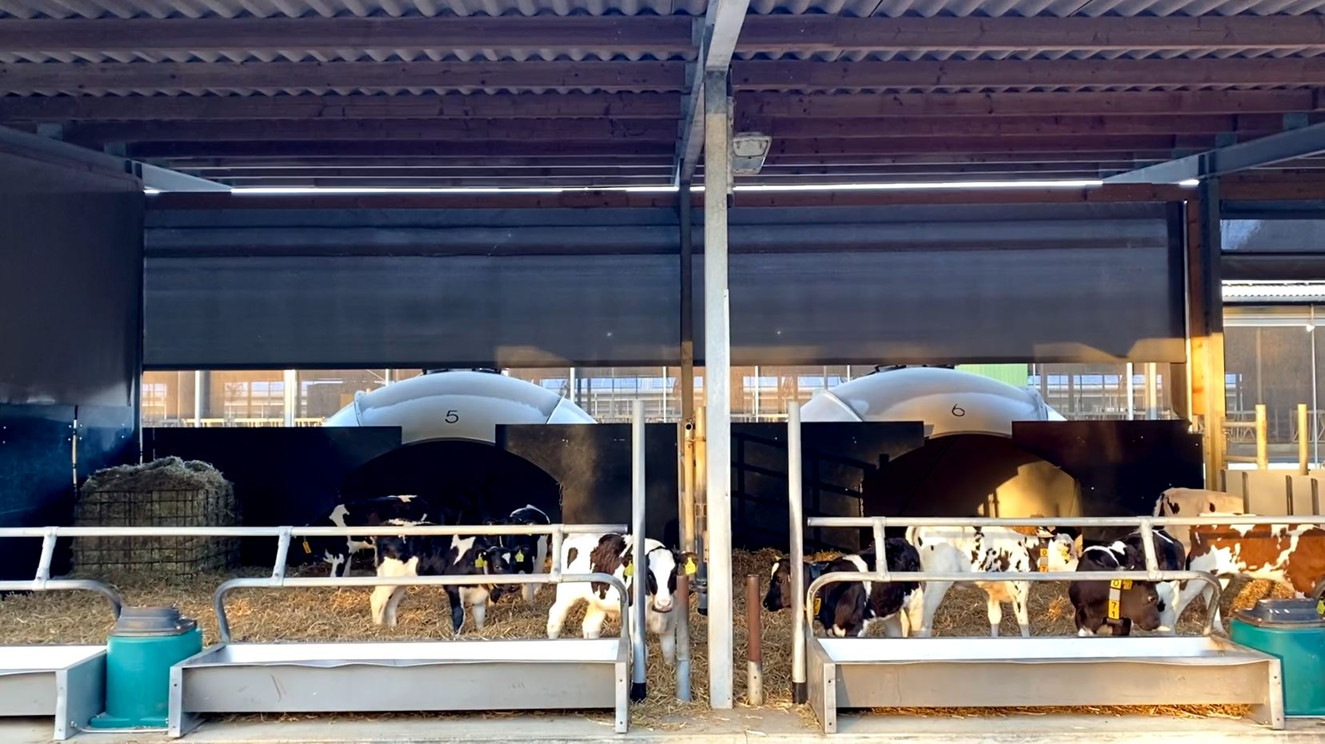 Wide feeding table and stainless steel troughs for convenient feed intake
Wide feeding table and stainless steel troughs for convenient feed intake
